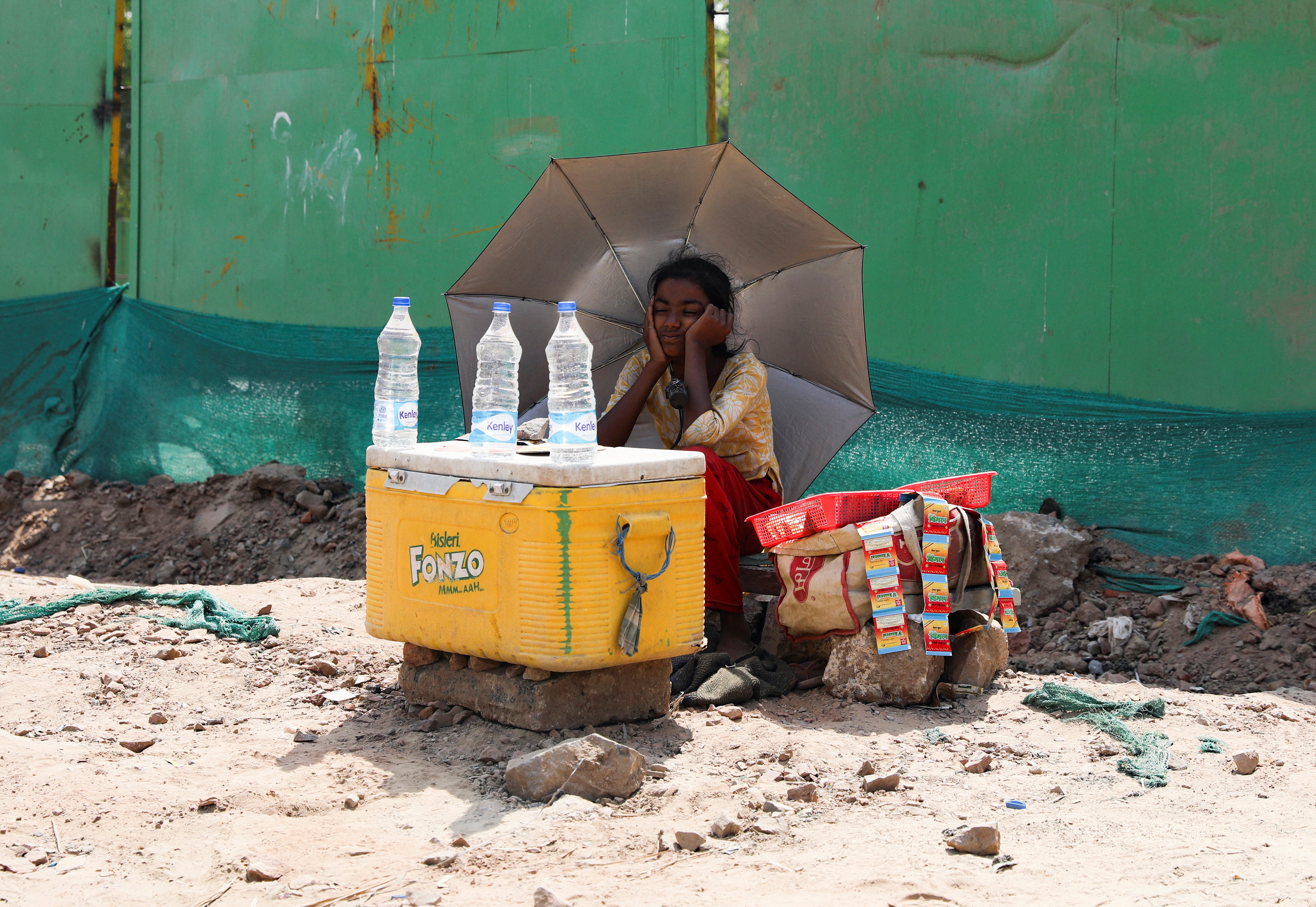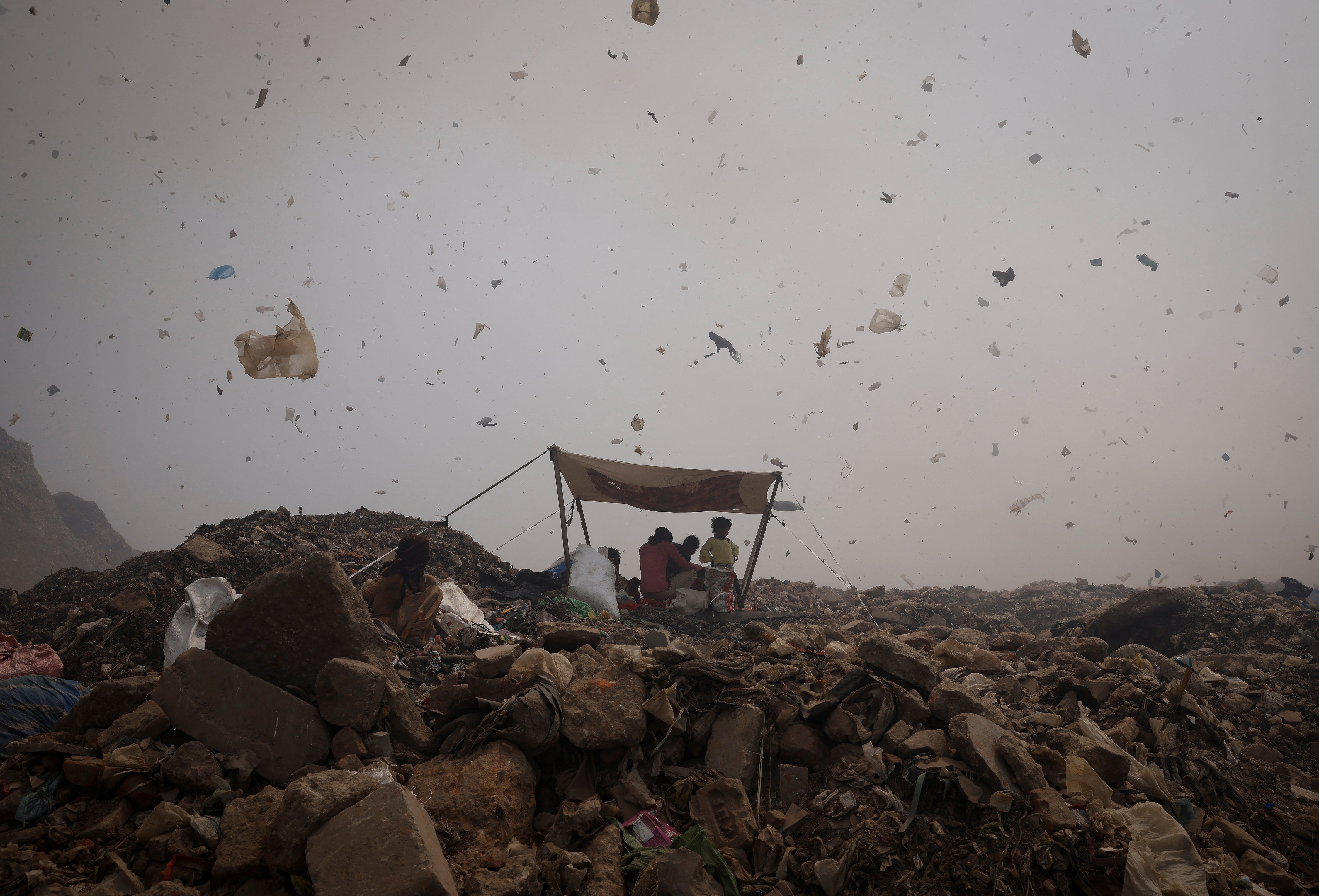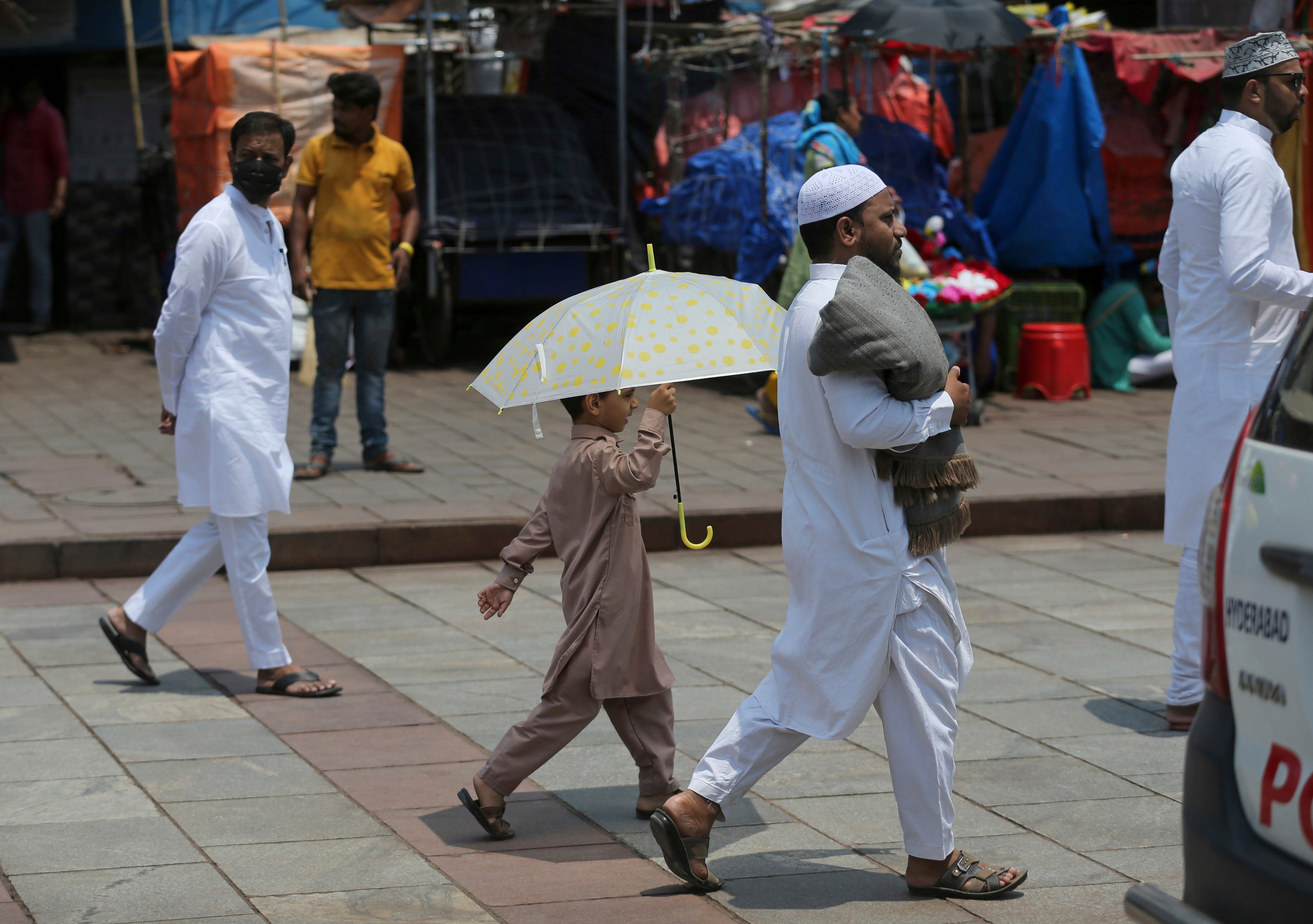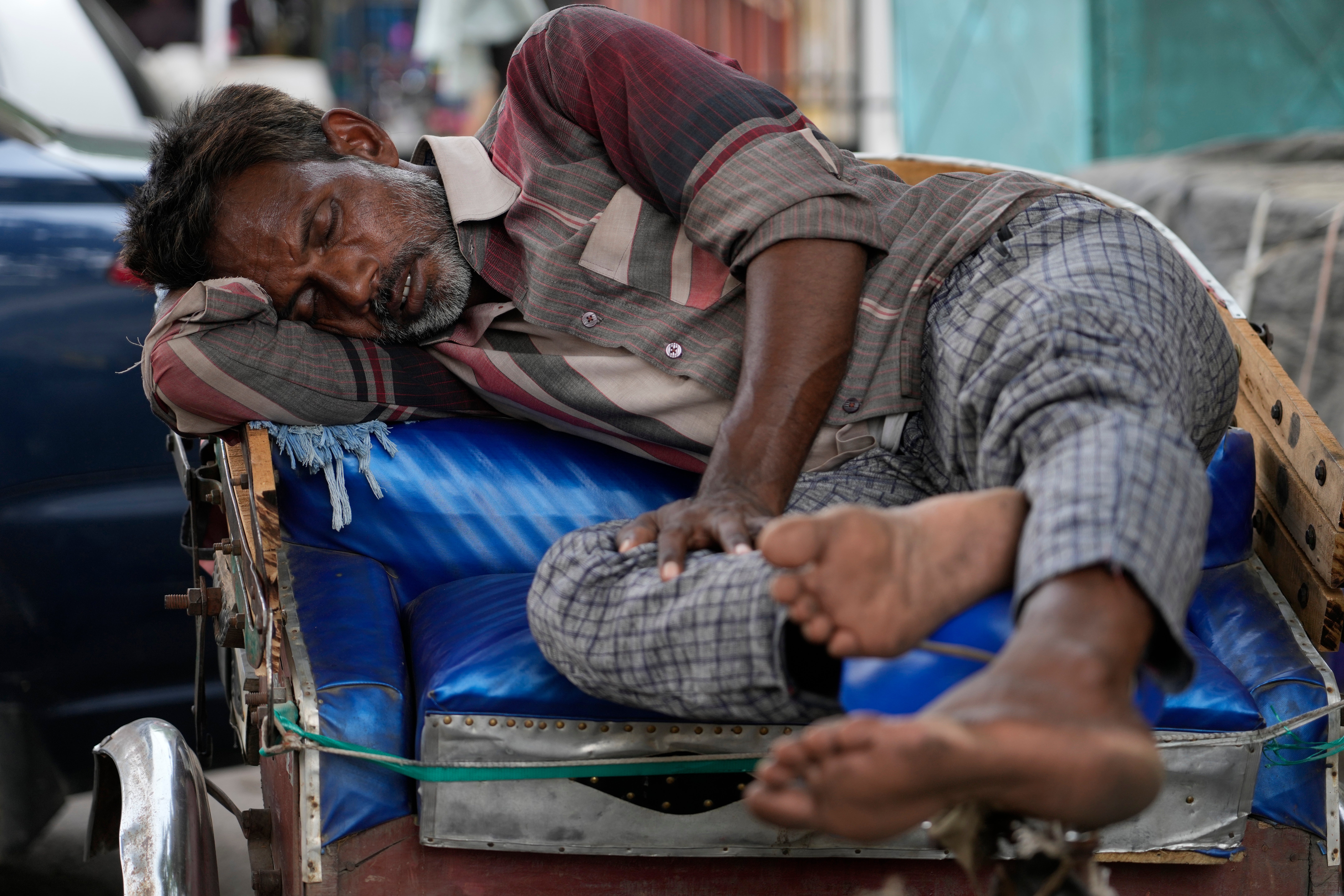Bamboo, white paint, coconuts: India’s hands-on battle for survival in the blistering heatwave
‘We are spreading awareness that this is not just an act of God – this is climate change,’ says one not-for-profit worker in Gujarat
The mercury in the Indian city of Ahmedabad has been hitting the mid-40s for days now.
“Many people are getting sick,” says Bhavna Maheriya, an electrical engineer and programme manager at Mahila Housing Trust, a not-for-profit group in the city.
“Some get dizziness, some people get diarrhoea and skin rashes,” she continues, adding that others get headaches and vomit, while the women suffer discomfort from wearing sanitary pads.
India is no stranger to heat, and over the years those living there have come up with coping mechanisms to survive the sweltering temperatures.
Some store water in terracotta pots, and venture outside only with material draped over their heads; others pour water over the roofs of their homes, or put soaking wet fabrics near to the entrance, in a bid to stay cool.

Still, in the past decade, heatwaves in India have killed hundreds each year.
And as the climate crisis fuels the frequency and intensity of heatwaves in this country of 1.4 billion people – and in other countries around the world – many recognise that more needs to be done to protect India’s inhabitants from the soaring temperatures, particularly those who cannot afford fridges or air conditioning.
The women and men behind the Mahalia Housing Trust, founded in 1994 by the Self Employed Women’s Association in order to facilitate better housing for its members in the state of Gujarat, are doing just that.
Today, the organisation, which comprises more than 200 staff members, consultants and female leaders across India, empowers poorer women in cities to tackle heat stress in their homes and settlements by adopting relatively inexpensive techniques developed by scientists and engineers.
Among the structural techniques they employ to keep people cool is the use of solar-reflective white paint, designed to reduce the radiation absorbed by the roofs and walls of slum houses, ensuring that less heat is transferred to the inside of the building. The paint has been proved to reduce interior temperatures by 4C to 5C, according to the trust.

The organisation also helps people living in slums, as well as schools and hospitals, to install roofs made out of paper and agricultural waste such as coconut husks.
These roofs are modular to allow easy installation, and can reduce indoor temperatures by up to 6C compared with tin sheet roofs, the organisation says.
The group also helps people to build bamboo roofs, made from resin-coated bamboo mats that are pressed together to form strong but lightweight and water-resistant panels. These have also been proved to reduce indoor temperatures by around 5C, it says.
The NGO says it uses money from donors, which include the Bill & Melinda Gates Foundation and the US government, to help fund the installations, while families also pay a nominal amount to encourage a sense of ownership.
Ms Maheriya, who is in charge of climate resilience at the group, says it is important to focus on the home, because that is where many women work as well as caring for their families.
Poorer women are particularly vulnerable to heat stress because they tend to work from home without air conditioning, while they also cook, which is hot work, and gather provisions and water from outside the house, she adds.

The heat also reduces productivity, she says, which means that it puts people’s livelihoods at stake.
Ms Maheriya says that during the heatwaves over recent weeks the organisation’s services have become more in demand. Electricity prices are also increasing, she says, meaning that fans are expensive to run, and the cost of cold drinks sold by street vendors has also gone up.
Asked how people in the city of Ahmedabad in Gujarat state were coping, Ms Maheriya says they had little choice but to carry on with their daily lives as best they can.
“They don’t have any option,” she says. “They have to survive.”
But men are at risk, too, particularly those whose wages are paid daily, who have little choice but to turn up for work outside during the hottest part of the day.
Rickshaw drivers, construction workers and street vendors are among those forced to make the difficult decision between protecting their health and making a living, according to Roop Singh, a climate risk adviser at the Red Cross Red Crescent Climate Centre.
“It makes it extremely difficult for the poorest and most marginalised people,” she says via email. “This is especially true when temperatures don’t cool off at night, making it harder for people to recuperate.”
The small bright spot is that it’s mostly a dry heat, she adds, which allows people to use some less expensive methods such as evaporative cooling, for instance by putting a wet sheet in front of a fan.

Ms Maheriya says it has taken time to persuade the communities the organisation works with that heatwaves are fuelled by human-caused climate change.
“Initially they thought it was an act of God, and that they have to deal with it,” she says. “But we are spreading awareness that this is not just an act of God – this is climate change.”
Meanwhile, some climate scientists and activists have argued that the best way to adapt to climate change is for the world to cut planet-heating carbon emissions, and that high emitters should be reducing their carbon footprint much more quickly.
Ms Maheriya says she is concerned about the threats of future heatwaves fuelled by climate change, in a country that is already extremely hot for at least three months of the year.
“We’re working for grassroots communities,” she says. “These communities are contributing very [much] less [to climate change], but they are affected a lot.”
Join our commenting forum
Join thought-provoking conversations, follow other Independent readers and see their replies
Comments
Bookmark popover
Removed from bookmarks